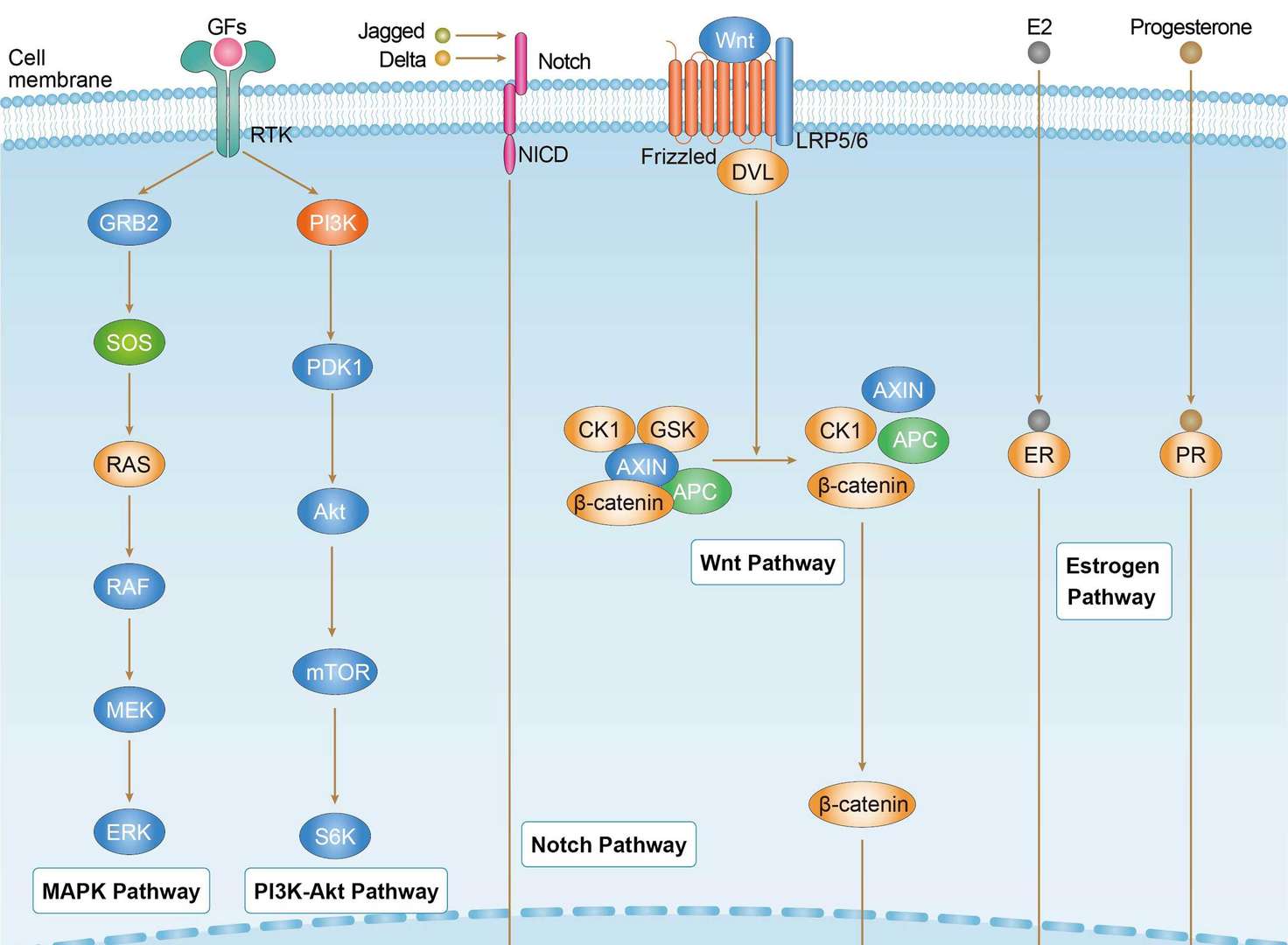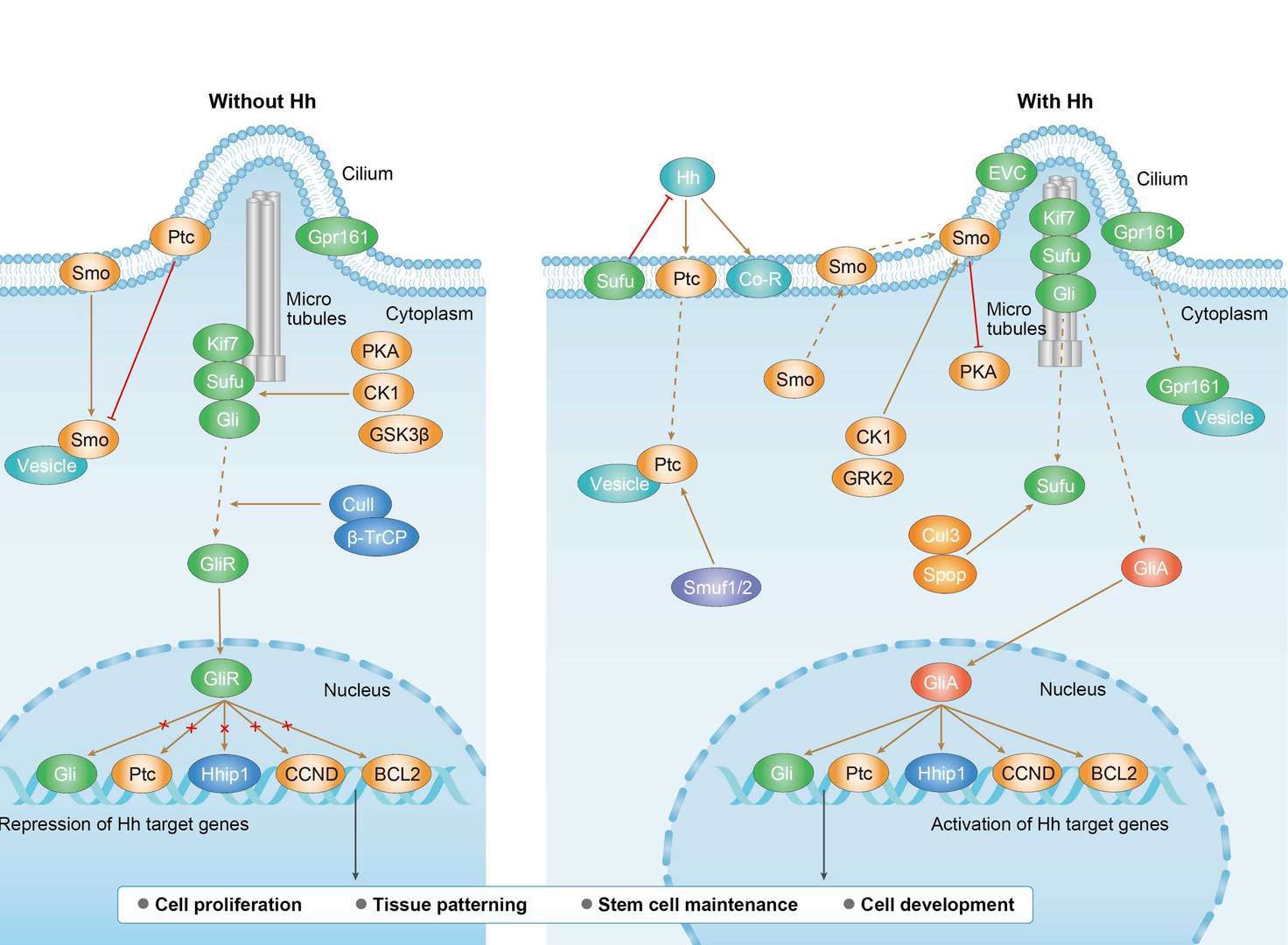Anti-CCND1 (clone W24V261) Recombinant Antibody Coupled Liposome (VS-1024-FY254)
CAT#: VS-1024-FY254
The anti-Cyclin D1 antibody conjugated liposome holds significant potential in the targeted treatment of adrenocortical carcinoma by selectively delivering therapeutic agents to cancer cells that overexpress Cyclin D1. This targeted approach could enhance the efficacy of treatment while minimizing systemic toxicity, which is often associated with conventional chemotherapy. Additionally, the liposome's biocompatibility and ability to encapsulate various therapeutic compounds, such as chemotherapeutics or RNA-based therapies, broaden its application in personalized medicine. Furthermore, this innovative strategy may facilitate the monitoring of treatment response through imaging techniques, thereby improving clinical outcomes for patients.






Specifications
- Potential Clinical Applications
- Adrenocortical carcinoma
Product Composition
- Clone
- W24V261
- Antibody Type
- IgG
- Antibody Host
- Mouse
- Antibody Reactivity
- Human
- Antibody Description
- This is a recombinant mouse monoclonal antibody that was specifically designed to recognize and bind to Cyclin D1, a crucial regulator of the cell cycle. The development of this antibody involved advanced recombinant techniques to ensure high specificity and sensitivity, allowing for its effective use in various experimental applications. By targeting Cyclin D1, this antibody serves to enhance our understanding of cell proliferation and its implications in oncogenesis.
Product Property
- Storage
- See in the COA
- Storage Shelf Time
- See in the COA
Target Information
- Target
- CCND1
- Alternative Names
- Cyclin D1; B-Cell Lymphoma 1 Protein; B-Cell CLL/Lymphoma 1; BCL-1 Oncogene; PRAD1 Oncogene; PRAD1; BCL1; Cyclin D1 (PRAD1: Parathyroid Adenomatosis 1)
- Full Name
- Cyclin D1
- Gene ID
- 595
- UniProt ID
- P24385
- Sequence Similarities
- Belongs to the cyclin family. Cyclin D subfamily.
- Cellular Localization
- Cytoplasm, Membrane, Nucleus
- Post Translation Modifications
- Phosphorylation at Thr-286 by MAP kinases is required for ubiquitination and degradation by the DCX(AMBRA1) complex (PubMed:10766840, PubMed:33854232, PubMed:33854235, PubMed:33854239).
It also plays an essential role for recognition by the FBXO31 component of SCF (SKP1-cullin-F-box) protein ligase complex following DNA damage (PubMed:19412162).
Ubiquitinated at Lys-269 by the DCX(AMBRA1) complex during the transition from G1 to S cell phase, leading to its degradation: ubiquitination is dependent on Thr-286 phosphorylation (PubMed:33854232, PubMed:33854235, PubMed:33854239).
The DCX(AMBRA1) complex represents the major regulator of CCND1 stability during the G1/S transition (PubMed:33854232, PubMed:33854235, PubMed:33854239).
Also ubiquitinated by a SCF (SKP1-CUL1-F-box protein) ubiquitin-protein ligase complex containing FBXO4 and CRYAB (By similarity).
Following DNA damage it is ubiquitinated by some SCF (SKP1-cullin-F-box) protein ligase complex containing FBXO31 (PubMed:19412162).
SCF-type ubiquitination is dependent on Thr-286 phosphorylation (PubMed:10766840, PubMed:19412162).
Ubiquitinated also by UHRF2 apparently in a phosphorylation-independent manner (PubMed:21952639).
Ubiquitination leads to its degradation and G1 arrest. Deubiquitinated by USP2; leading to its stabilization (PubMed:19917254).
- Protein Refseq
- NP_444284.1
- Function
- Regulatory component of the cyclin D1-CDK4 (DC) complex that phosphorylates and inhibits members of the retinoblastoma (RB) protein family including RB1 and regulates the cell-cycle during G(1)/S transition. Phosphorylation of RB1 allows dissociation of the transcription factor E2F from the RB/E2F complex and the subsequent transcription of E2F target genes which are responsible for the progression through the G(1) phase. Hypophosphorylates RB1 in early G(1) phase. Cyclin D-CDK4 complexes are major integrators of various mitogenenic and antimitogenic signals. Also substrate for SMAD3, phosphorylating SMAD3 in a cell-cycle-dependent manner and repressing its transcriptional activity. Component of the ternary complex, cyclin D1/CDK4/CDKN1B, required for nuclear translocation and activity of the cyclin D-CDK4 complex. Exhibits transcriptional corepressor activity with INSM1 on the NEUROD1 and INS promoters in a cell cycle-independent manner.
Customer Review
There are currently no Customer reviews or questions for VS-1024-FY254. Click the button above to contact us or submit your feedback about this product.
Submit Your Publication
Published with our product? Submit your paper and receive a 10% discount on your next order! Share your research to earn exclusive rewards.
Related Diseases
Related Signaling Pathways
Downloadable Resources
Download resources about recombinant antibody development and antibody engineering to boost your research.
Datasheet
MSDS
COA
Certificate of Analysis LookupTo download a Certificate of Analysis, please enter a lot number in the search box below. Note: Certificate of Analysis not available for kit components.
See other products for "CCND1"
Select a product category from the dropdown menu below to view related products.
| CAT | Product Name | Application | Type |
|---|---|---|---|
| AGTO-G004R | Anti-Ccnd1 immunotoxin (IgG)-RTA | Cytotoxicity assay, Function study |
| CAT | Product Name | Application | Type |
|---|---|---|---|
| NEUT-262CQ | Mouse Anti-CCND1 Recombinant Antibody (clone DCS-6) | IHC-Fr, WB, Block, IHC-P, IF, FC, IP | Mouse IgG2a, κ |
| CAT | Product Name | Application | Type |
|---|---|---|---|
| MOR-0515 | Hi-Affi™ Rabbit Anti-CCND1 Recombinant Antibody (clone DS515AB) | IHC | Rabbit IgG |
| MOR-4566 | Hi-Affi™ Rabbit Anti-CCND1 Recombinant Antibody (clone TH76DS) | WB, IF, ICC, FC | Rabbit IgG |
| CAT | Product Name | Application | Type |
|---|---|---|---|
| MRO-0413-CN | Rabbit Anti-CCND1 Recombinant Antibody (clone CBACN-164) | WB, IF, IHC, IP | Rabbit IgG |
| VS3-XY182 | Mouse Anti-CCND1 Recombinant Antibody (clone 3B6G3) | IHC, ICC, FC | Mouse IgG1 |
| VS3-XY183 | Mouse Anti-CCND1 Recombinant Antibody (clone 3D8) | ELISA, WB | Mouse IgG1 |
| VS3-FY218 | Recombinant Mouse Anti-CCND1 Antibody (clone 1F7F5) | ELISA, WB, IHC, FC | Mouse IgG1 |
| VS3-FY219 | Recombinant Mouse Anti-CCND1 Antibody (clone 2A5C9) | ELISA, WB, FC | Mouse IgG1 |
| CAT | Product Name | Application | Type |
|---|---|---|---|
| VS-1024-XY148 | Mouse Anti-NHP CCND1 Recombinant Antibody (clone DCS-6) | WB, IF | Mouse IgG2a, kappa |
| CAT | Product Name | Application | Type |
|---|---|---|---|
| VS-0525-XY1085 | Anti-CCND1 Immunohistochemistry Kit | IHC | |
| VS-0525-XY1086 | Anti-Mouse CCND1 Immunohistochemistry Kit | IHC | |
| VS-0525-XY1087 | Anti-Monkey CCND1 Immunohistochemistry Kit | IHC |
Popular Products

Application: IF, IP, Neut, FuncS, ELISA, FC, WB

Application: Neut, ELISA, IF, IP, FuncS, FC, ICC

Application: IF, IP, Neut, FuncS, ELISA, FC, ICC

Application: ELISA, WB, BLI, SPR

Application: ELISA, IHC, FC, IP, IF, Inhib

Application: ELISA, WB, FC, IHC, IP

Application: ELISA, WB, FC

Application: ELISA, FC, IHC, Neut
-4.jpg)
Application: FC, FuncS, IA, IF, IP, IHC

Application: EM, ELISA, ICC, IHC-Fr, IHC-P, WB
For research use only. Not intended for any clinical use. No products from Creative Biolabs may be resold, modified for resale or used to manufacture commercial products without prior written approval from Creative Biolabs.
This site is protected by reCAPTCHA and the Google Privacy Policy and Terms of Service apply.









 Breast Cancer
Breast Cancer
 Hedgehog Signaling Pathway
Hedgehog Signaling Pathway













